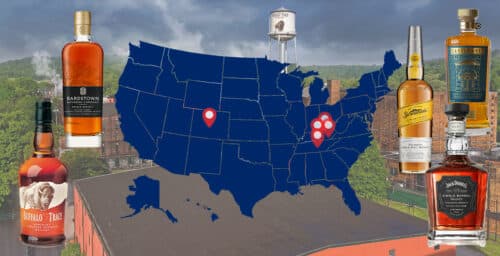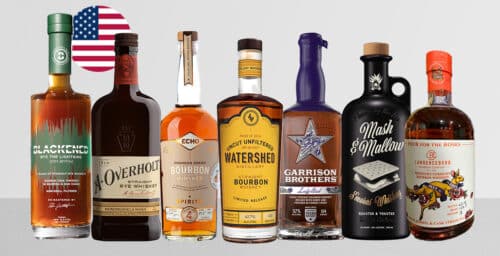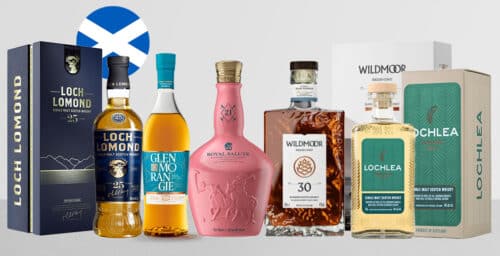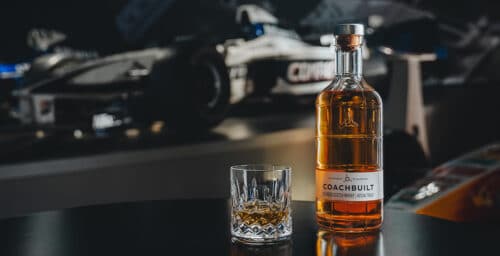Assessing alcoholic strength is of profound importance to the tax man, since it provides the basis upon which duty is levied. As with other materials – precious metals, for example – the traditional method of measuring purity or strength was by subjecting the material to a trial, assay or ‘proof’. The word first appeared in England during the 1500s.
Early methods were crude and unreliable. Spirits were tested by soaking a pellet of gunpowder in them then attempting to ignite it. If the pellet burned, the liquid was termed ‘over proof’ (OP) and taxed at a higher rate; if it did not burn, the liquid was ‘under proof’ (UP). In fact spirits containing less than 57.15% alcohol by volume (ABV) will not allow the gunpowder to burn and this strength was termed 100 degrees proof. 100% alcohol, or pure alcohol, is 175 degrees proof, usually expressed as 75°OP.
A simpler method, and one that I use all the time, was to shake the liquid vigorously in the bottle and observe the bubbles (known as ‘beads’). If they dissipate rapidly, the liquid is under 50%ABV. Higher ABV does not increase the beading, however – white dog (new make spirit) and high strength white spirits will not hold their beads, and the beads on younger whiskies will not linger as long as those on aged whiskies. This is why the beading test was commonly refereed to in Scotland as a measure of quality.
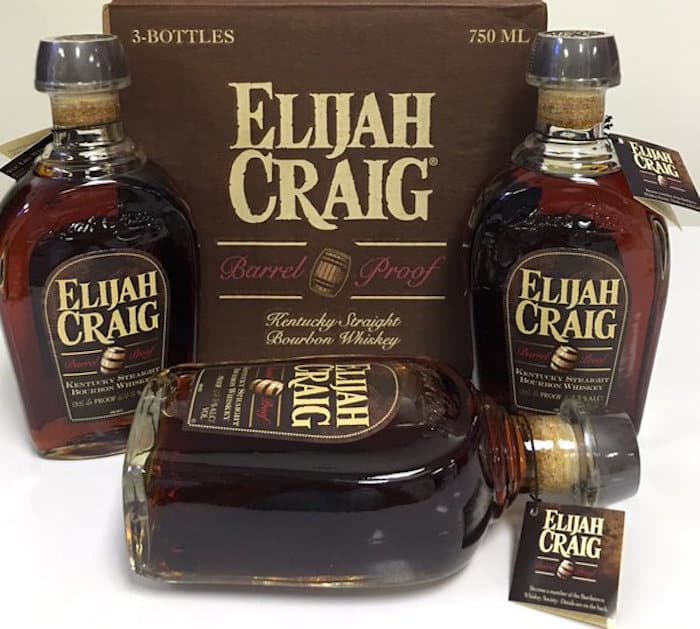
Alcohol is less dense than water so weighs less; thus, chemists can measure the amount of alcohol present in a mixture by comparing its weight to than of the same quantity of water, at the same temperature and pressure. This is termed the ‘specific gravity’ (SG) of the solution.
In 1675 the English chemist, Robert Boyle, invented an instrument which used specific gravity to detect counterfeit coin. Although it could also be used to measure the SG of liquids, Boyle’s hydrometer was fragile and inaccurate, so not widely used for this. The first hydrometer to be designed specifically to determine the density of liquids was invented in 1730 by the Scottish instrument-maker, John Clarke. This was adopted by the Board of Excise in 1787, but it was not completely accurate and by adding other constituents to the alcohol, especially molasses, cunning distillers could achieve a lower reading and thus evade tax.
The first wholly reliable hydrometer was designed by Bartholomew Sikes, secretary of the Excise Board between 1774 and 1783, and adopted by the British government in July 1816. Soon after this (1824) the famous French chemist, Joseph-Louis Gay-Lussac, devised a scale based on %ABV which took 100% ABV as 100° proof and 100% water by volume as 0° proof. This was adopted by the most European governments.
In August 1790 the U.S. government adopted the Dykes hydrometer, replaced in 1842 by the Tralles hydrometer. These defined proof as twice the ABV. So 100° proof on the American scale is 50° proof on the French scale, and about 87.6° proof on the British scale.
In October 1935, Federal regulation set the minimum proof for whiskey at 80°/40% ABV. I believe it became mandatory to state the strength on the label in December 1960, either as proof or ABV. Previously this was optional.
All very confusing. By the 1970s many distillers in the U.K. preferred to state the %ABV, sometimes alongside degrees proof, and then on January 1, 1980, the former measurement replaced the latter throughout the European Union. Many American distillers still state U.S. proof alongside %ABV.
Changes in Minimum Proof Laws
In the U.K., strength was not regulated until September 1st, 1879, when an amendment to the Sale of Food & Drugs Act 1875 fixed the minimum strength at which whisky, rum, and brandy might be offered for sale at 75°proof (43%ABV), with no upper strength limit. There was no requirement to state the strength on the label and it would seem that the usual strength, at least for premium brands, was between 100° proof (57%ABV) and 88° proof (50%ABV).
So when in 1916 the Central Control Board (Liquor Traffic) was required by David Lloyd George, Secretary of State for War (and Prime Minister the following year), to make 75° proof the maximum strength at which spirits could be sold in the U.K. – reduced to 70° proof (40%ABV) next year, the whisky trade was not happy.
Lloyd George was a passionate teetotaler, and his ambition was to ban spirits altogether. Peter Mackie of White Horse Distillers had described him as a “faddist and a crank and not a statesman” in 1909. “But what can you expect of a Welsh country solicitor being placed, with no commercial training, as Chancellor of the Exchequer [which he was then] in a large country like this?”
In a memorandum to the Control Board, the Wine & Spirit Brands Association maintained:
“Compulsory dilution to a degree that would rob high-class brands of their distinctive characteristics, and practically reduce all brands to common mediocrity, would obviously be to the advantage of those whose aim is cheapness rather than quality.”
But their pleas fell upon deaf ears, and 40-43%ABV remains the standard bottling strength for Scotch to this day. Since 1980 the ABV must be stated on the label.
So far I have been unable to discover when the rule that this should be the maximum strength in the U.K. was relaxed – and will welcome any readers’ comments on this. As early as 1950, Marshall Robb remarks: “…ordinary bottled whisky and other spirits such as gin, rum and brandy are usually, but not always, sold at 70 degrees proof or 30 degrees UP, which is the same.” [Scotch Whisky]
Brand owners began to extend their product ranges with ‘cask strength’ bottlings during the 1980s – the earliest I know of is Glenfarclas 105 at 60%ABV, introduced in 1981 – and with the growth in interest in single malts during the 1990s, many more were released by independent bottlers.
In the United States, it would seem that there was no national regulation of the strength at which spirits might be sold until the Volstead Act 1920, which banned the manufacture and sale of alcoholic liquors and defined the latter as any beverage containing more than .5% alcohol. Prior to this, there may have been localized state regulations.
Whiskey prescribed as medicine was big business throughout Prohibition for licensed suppliers. As an example in 1927, 1.8 million gallons of whiskey was sold through 57,000 registered druggists and 16,000 doctors. This whiskey was between 90 and 100 proof.
Mention should be made, however, of the Bottled-in-Bond Act of 1897, which set out to counter adulteration – widespread at the time – and define the level of quality required by bourbon, including bonding for at least four years and bottling at no less than 100° proof (50%ABV). But since the regulations applied only to the product of a single distillery, distiller and season – whereas ‘straight’ whiskeys were typically blends of whiskeys of different ages and different distilleries – it was of limited application.
Before Prohibition bottles did not have to bear a proof statement, although some distillers elected to do so. The leading whisk(e)y historian, Chris Middleton, tells me:
“The norm for bottled whiskey until Prohibition was 100°- 90° U.S. proof (50/45% ABV). I have seen no label before 1919 with proof exceeding 100°. After Prohibition was repealed in 1933, the norm seems to have been around 90°, with some at 100° and a few lower (84° proof). Most whiskeys stayed around 90° proof until the early 1990s.
“This is when U.S. excise duties increased, and this combined with social concerns about alcohol’s impact (especially driving under the influence), the push to improve corporate profits, and fierce competition from vodka & white spirits (bottled at 40%ABV), encouraged many producers to reduce the strength to 43%, and in the early 21st century to 40%.
“High proof bourbon bottlings did not appear in the US until the late 1980s: Booker’s 1988, then Wild Turkey Rare Breed 1991.”




